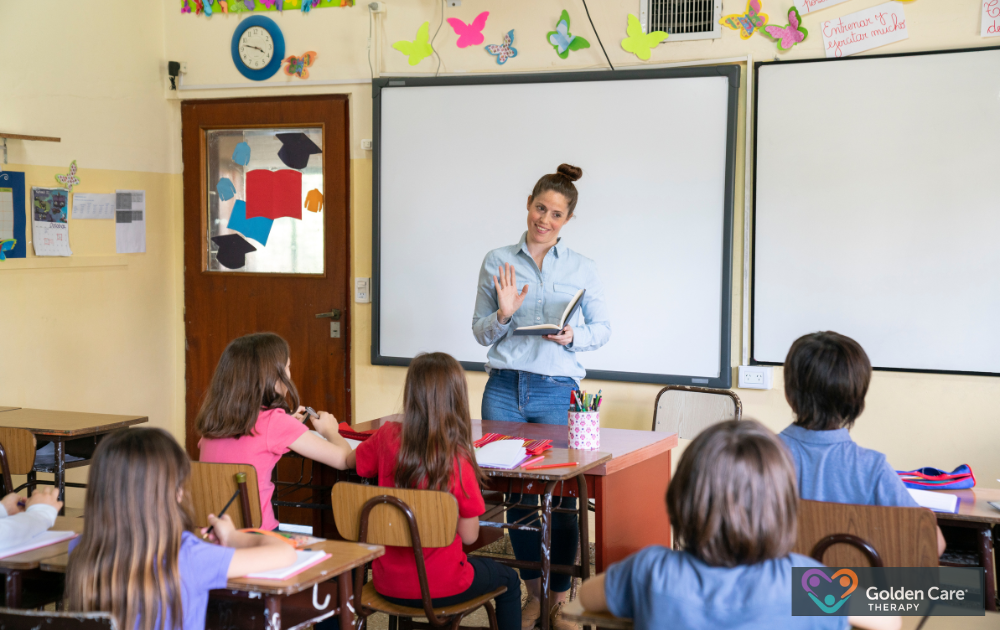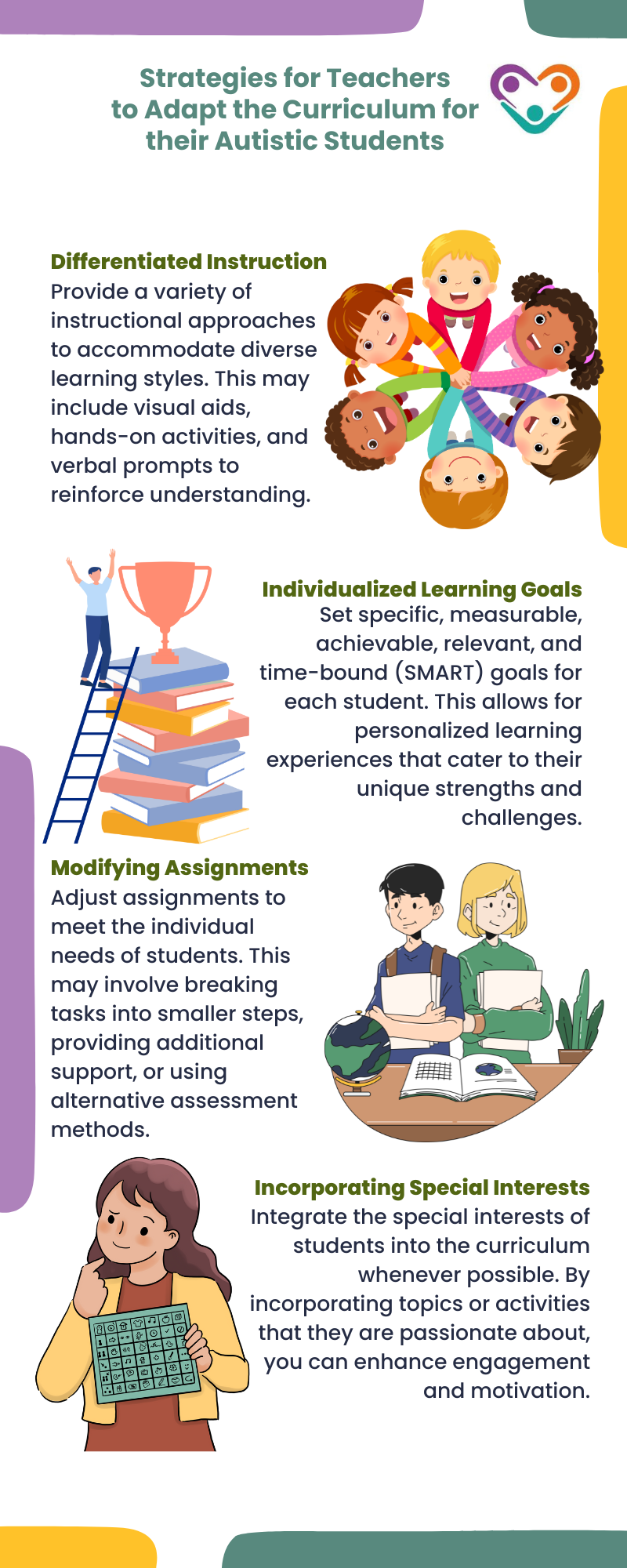Children with autism often have unique learning styles and needs that require adapted teaching strategies. Educators and caregivers must be aware of these differences in order to provide the necessary support for their learning journey.
By understanding the strengths and challenges of each individual, teachers can tailor their instructional methods, materials, and content to create a supportive and inclusive learning environment.
In this article, we’re going to look at various effective strategies that teachers can use when teaching their autistic students.

Utilizing Visual Strategies
Visual strategies play a crucial role in supporting the learning of autistic students. These strategies leverage the visual strengths of individuals with autism and help them comprehend and process information more effectively.
One effective visual strategy is the use of visual schedules. Visual schedules provide a visual representation of the day’s activities, helping students understand and anticipate what is coming next. This promotes independence, reduces anxiety, and improves time management skills.
Visual cues are also valuable tools for teaching autistic students. As visual learners, children with autism benefit from visual cues that help them understand and follow instructions.
First-then cues, for instance, visually depict a sequence of activities, making it easier for students to understand and remember what is expected of them.
Incorporating visual strategies such as visual schedules, visual cues, and symbols can enhance communication, promote independence, and improve comprehension for autistic students. These strategies provide a visual structure and support that helps students navigate their learning environment more effectively.

Establishing Routines
Maintaining a predictable routine is highly effective for teaching children with autism, as they are sensitive to abrupt changes in routine. By establishing consistent daily routines, educators can create a sense of stability and security for their students.
Providing advanced warning and using tools like visual schedules and social stories can help children anticipate and prepare for changes in routine. This allows them to navigate transitions more smoothly and reduces anxiety.
However, teachers should remember that each student is unique, and routines should be tailored to their individual needs. Flexibility within the routine can be provided by offering choices or incorporating preferred activities.
By involving the students in the creation of the routine, they can develop a sense of ownership and feel empowered.

Using Special Interests in Teaching
Special interests can serve as a gateway to teaching important skills to autistic students. Incorporating a child’s special interest, such as a favorite character from a movie or a specific toy, can foster engagement and trust while teaching a variety of social norms and skills.
One effective method is to create social stories or narratives that incorporate the special interest. For example, if a child is particularly interested in a specific character, educators and parents can develop social stories that feature that character engaging in appropriate social behaviors.
This approach allows the child to connect with the material and enhances their understanding and retention of social skills.
By tapping into a child’s special interest, educators and parents can tailor teaching materials and activities to make them more relatable and engaging. This personalized approach not only enhances learning outcomes but also fosters a positive and supportive learning environment.

Leveraging Sensory Tools
Sensory processing challenges are common among individuals with autism. To address these challenges, it is important to leverage sensory tools that can support the sensory needs of autistic students.
Parents and educators can create a sensory toolbox filled with items like fidget spinners, stress balls, and water beads.
These sensory tools can help individuals with autism regulate their sensory input and maintain focus during teaching sessions. By providing a sensory outlet, these tools enable students to engage more effectively in learning activities. For example, a stress ball can help a student manage anxiety or fidgeting, allowing them to concentrate better on the task at hand.
Incorporating sensory tools into the learning environment can be particularly beneficial for students who have sensory sensitivities or seek sensory stimulation. It is important to create a sensory-friendly space where students can access these tools as needed, both at home and in educational settings.
Providing Sensory Support
Children with autism may have specific sensory needs that require additional support. Sensory tools and activities can help regulate sensory input and create a calmer learning environment.
Occupational therapists can assist in assessing these needs and implementing strategies to incorporate regulating sensory activities into the daily routine.
By providing sensory support, such as fidget tools, weighted blankets, or sensory breaks, educators can help autistic students feel more regulated and focused. These tools and activities help to manage sensory sensitivities and reduce overreactions to the sensory environment, which can be overwhelming for some individuals with autism.

Utilizing Auditory Supports
Auditory supports can be particularly beneficial for autistic students, as they can enhance learning, improve language skills, and promote engagement. Utilizing low-volume music or repetitive structures in songs can help children with autism learn, work on fine motor skills, and increase vocalizations.
Incorporating auditory supports into the learning environment can be done through various strategies. Teachers can use visual aids paired with spoken instructions, provide recorded instructions or audio materials, or use visual timers to help students with time management.
These supports help to enhance comprehension and provide predictable auditory cues, making it easier for autistic students to understand and follow directions.
Adapting the Curriculum
Adapting the curriculum involves tailoring instructional approaches and materials to match the learning styles, abilities, and interests of autistic students. By doing so, educators can effectively engage students and promote meaningful learning experiences.
Here are some strategies they can follow:

Effective teaching strategies for autistic students require a blend of the following strategies we’ve mentioned above. By employing these strategies, teachers can create a supportive and effective learning environment that caters to the unique needs of autistic students, fostering their academic and social success.
If you’re seeking specialized ABA therapy in New Jersey, Indiana, Georgia, and New York, Golden Care offers comprehensive services tailored to meet the unique needs of each individual. Contact us to learn more or book a consultation today.
Sources:
https://www.nu.edu/blog/4-teaching-strategies-for-students-with-autism
https://www.autismspeaks.org/tool-kit-excerpt/autism-classroom-strategies
https://harkla.co/blogs/special-needs/teaching-strategies-for-autism
https://www.autismparentingmagazine.com/autism-teaching-strategies
https://subtitlebee.com/blog/8-strategies-and-methods-for-teaching-autistic-children-best-practices



